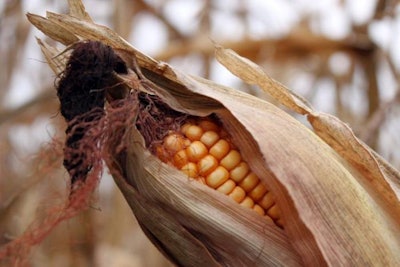
I recently attended the 2016 World Mycotoxin Forum (WMF), a biennial joint meeting of the World Mycotoxin Forum and IUPAC International Symposium on Mycotoxins held in Winnipeg, Canada. The conference drew more than 400 international attendees and provided a well-rounded view of the issues surrounding mycotoxin contamination in animal and human health.
In addition to the health effects, the presence of mycotoxins also carries a large economic burden. Building off a 2003 study conducted by USDA researcher Peter Vardon (2003), the range of U.S. revenue losses due to mycotoxins can push upwards of $1.5 billion annually. Vardon and his team are currently working on an updated report; however, preliminary evidence suggests the impact of revenue has increased — and, with uncertain effects of climate change in recent years, will likely increase in the future.
While climate change was a hot topic at the event, many presentations also focused on the effects of and research regarding masked mycotoxins. These “hidden” mycotoxins present a major challenge because they are not routinely detected by traditional testing methods, which makes management and control difficult.
According to Dr. Vittorio Fattori, Food & Agriculture Organization of the United Nations (FAO) and FAO/WHO Joint Expert Committee on Food Additives (JECFA), masked mycotoxins will pose an especially large hurdle for developing countries who may not have the technology, resources or economic feasibility to address this threat.
“Unfortunately, end-of-chain solutions don’t work,” Fattori says. “Mycotoxins need to be looked at holistically from pre-harvest to post-harvest to see what measures make sense where we can have the most impact in terms of control.”
In order to do so, there has been a global “boom” in research. A number of improved technologies were mentioned at WMF, including: enhanced testing and analysis, the development of detoxifying agents, and emerging technologies in genetically modified-crops with resistance to mycotoxin producing fungi or the ability to make mycotoxins less toxic.
Given their detrimental effects on livestock production, the fight against masked mycotoxins will make headlines.

















